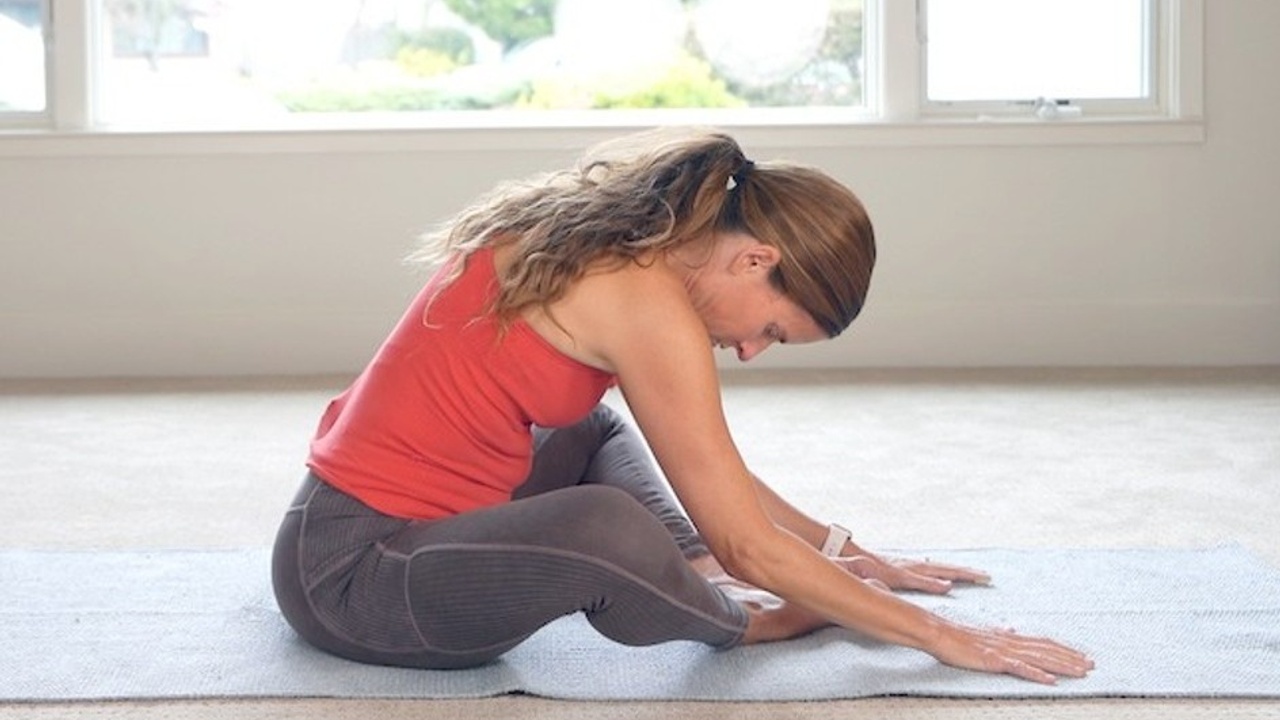Why Yin Yoga Is Not Enough

Is it okay to do just Yin, or will it make you unbalanced?
I learned the answer the hard way while I was in the process of falling in love with Yin Yoga.
Being someone who carries emotions in my upper body, by my mid 20s I was diagnosed with carpal tunnel syndrome caused by chronically tight upper back muscles.
I was told in physical therapy to keep the weight off of my arms and shoulders. The same advice was echoed by my yoga teachers.
I found Yin Yoga, and it worked for me on multiple levels. It didn't put weight off my arms, it helped me stay sober, and it became a much needed refuge for the grief that was moving through me.
As Yin helped me heal, I continued to neglect my upper body – thinking that was the right thing to do while focusing all my self-care time on releasing tension and moving slowly.
What I didn't know at the time was that this combination was actually making my repetitive strain injuries worse. I started having recurring episodes of frozen shoulder, stiff neck and carpal tunnel syndrome. I also lost the ability to put weight on my wrists and shoulders. It got to the point where I was unable to even do cat and cow.
As my studies in Yin Yoga evolved, I learned that Yin Yoga is not meant to be a complete practice on its own. I had been going about treating my upper body issues all wrong, and my syndromes were getting worse because of underuse.
I set out to find a way to build strength in my arms and upper back even though I couldn't put weight on them.
I didn't need to stop all my Yin stretching, but I needed to complement it with some kind of Yang activity to build strength, vigor and resilience.
The Limitations of Vinyasa Yoga
I knew I needed to find an exercise routine that felt good while also keeping my bones and joints strong, but I had learned to avoid Vinyasa yoga. Even though its the go-to style for strength-building in yoga, I found that Vinyasa yoga worsened the pain in my upper body and caused numbness in my hands.
Why was that happening? With all its repetitions of planks and push-ups, Vinyasa Yoga can over-emphasize the chest while neglecting the upper back. This can obstruct the thoracic outlet and create brachial plexus impingement – constricting the passage that the nerves and blood vessels must pass through, thus reducing blood flow and sensation in the forearms and hands.
I looked for alternatives. I tried weight lifting, interval training, and weight machines at the gym. But none of these really stuck with me – I guess because I'm just a yoga lover at heart.
I finally found what I was looking for when I learned about an alternative Vinyasa-like approach that applies a more balanced set of stresses to the upper body. This approach is called Yang Yoga – a set of flows created by my yin teachers Paul and Suzee Grilley. The Yang Flows take the best parts of vinyasa yoga, tweak them so they are friendlier to people with different needs, and add other elements that provide variety in ultra-satisfying longer flows, while omitting the need for so many repetitions.
The Yang Flows are meant to be customized and modified. They are learning tools. I've created several videos based on them. Below is one that's entirely focused on the upper body. It mixes Yang Flow movements with other postures that energize all parts of the upper body.
This 10 minute sequence builds strength, vigor and resilience in the upper back, chest, shoulders and arms. Targeted muscles include the intercostals, triceps, biceps and deltoids. This routine can be done on its own, or as an add-on to any lower-body focused routine.
If you can't put weight on your hands at all, you can modify this practice by placing one yoga block under each hand. If that's still too much, then you may not be ready for bodyweight exercise like this. Instead, start working on gentle rehabilitation of your upper body strength with hand weights.
Why is Yin incomplete?
The need to build strength is completely neglected by yin yoga, and that's by design. Strengthening exercises are the domain of yang yoga and yang movement. This was how I learned the importance of finding the right kind of yang exercise.
Yin and yang is an ancient Chinese cultural philosophy that believes all of nature is subject to a sacred universal duality. In this duality, yin and yang are opposing and complementary energies that are manifested on a vast scale in the cosmos as well as on a smaller scale on earth and within each animal and object.
Generally speaking, yin is considered an inward energy that is feminine, still, dark and passive. On the other hand, yang is considered an outward energy that is masculine, dynamic, bright and active.
In terms of yoga, movement that is passive and slow is yin as compared to movement that's active and fast, which is yang.
It would be unbalanced for a yoga practitioner to do yin yoga only. Yin movement is ideally balanced with yang movement that has rhythm, repetition or strength-building.
In terms of the tissues of the body, long stretches tend to affect a different type of tissue – fascia – which is considered yin tissue. Shorter movements that emphasize strength and balance affect muscle, which is considered yang tissue.






